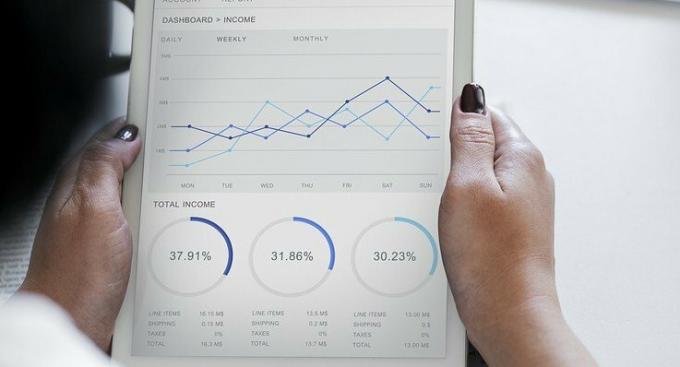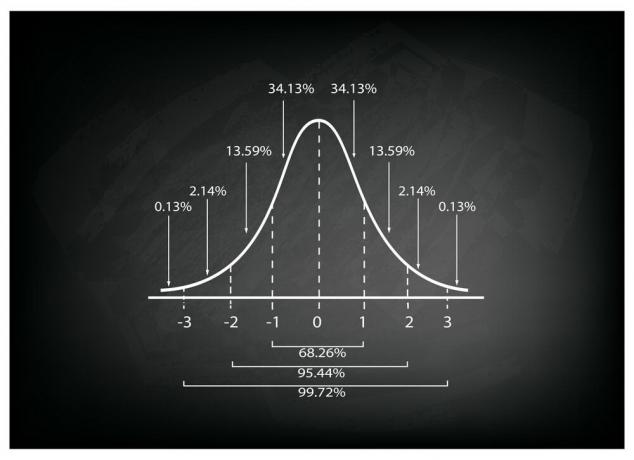The main idea of the term variable, refers to events or objects susceptible to modifications, to undergo changes based on reasons that can be determined and indeterminate. That is, it refers to unstable events that can present strong alterations in a short time or that are not capable of acquiring a record.
It is common to see the term used in areas such as science, mathematics, logic, and statistics.
Advertisements
Statistically the variable it makes mathematical sense, under the tendency to be measured in different cases where it can adopt different values. It can be said that they exist qualitative variables, which express characteristics or modalities and quantitative variables, which express numerical quantities and can be discrete variables or continuous variables.

Advertisements
In this article you will find:
What is a continuous variable?
It is the quantitative type variable
In this sense, the continuous variable is considered infinitesimal, in addition to including the exact values, therefore it serves to expose and measure any value with good precision.
Advertisements
This variable differs from the discrete variable, since it only admits express finite values of a group of numbers.
If a variable, in addition to being continuous, beats values with a certain probability of occurrence, it can be said that it is a continuous random variable. In this sense, it is important to distinguish the type of variable (whether it is discrete or continuous), since the probabilistic models that are applied in each case are different.
Advertisements
It is thought that a continuous random variable it is completely defined by knowing all the values that it can assume and the probability of happening that each one of them possesses. If x is a continuous random variable and we want to know the probability distribution, the discrete variable probability function cannot be applied because it assumes many values. Then the probability associated with each of the values is practically zero and the distribution function must be continuous.
Examples of continuous variables
Here are some examples that make it easier to understand the concept of continuous quantitative variables:
Advertisements
- The length that can be expressed in meters and can be 1.5 one and a half meters, 2.25 two and a quarter meters (2.25), etc.
- The stature of a student group 1.75, 1.83, 1.70, 1.45, 1.70.
- The delivery time of fast food in an establishment one hour; two and a quarter hours; half an hour.
- The price of home furnishings $ 53.5; $202,99; $105,60.
- The distance 235.5 kilometers, 65 kilometers.
It can be said that the vast majority of physics variables are continuousAmong these we can mention length, speed, time, acceleration, temperature, energy, among others.
The continuous variables allow calculation and arithmetic operations.
Characteristics of continuous variables
- In theory, continuous variables cannot be measured with absolute accuracy, the observed value largely depends on the instrument used and its accuracy.
- It is important to note that they are prone to measurement errors, since measurement is inherent in measuring instruments.
- Through calibration and compensation procedures, it is possible to anticipate some types of errors, in order to reduce their impact on the statistic.
- When working with continuous variables, importance is given to the limits, either minimum or maximum, and in the same way a margin of error. By establishing this provision, it is possible to know the scope and it is possible to take advantage of the concept of continuous variable for a great variety of statistical works.
- Continuous variables can assume any value, weight, temperature, height. It differs from discrete or discontinuous ones that assume certain values, such as the number of children in a family, the number of televisions in a restaurant, etc.
- Possible values are not countable, you can expose all given values in an interval. They result from measurement.
Conclution
Finally, it is necessary to highlight that there are properties that remain fixedExamples of this are race, sex, eye color, etc.
These characteristics remain fixed for a person, but vary from one individual to another of the same social group. Other properties can vary from one individual to another and at the same time change in the same individual over time, There are also characteristics associated only with some individuals in the population, such as a disease or alcoholism.
The idea of the previous paragraph is to show how fickle the subject of variables can be, associated with characteristics or properties of the object of statistical study. Sometimes being able to determine in what quantity the characteristic is presented, and other times it is only possible to determine whether or not said characteristic is present.
Finally, it is worth mentioning that the statistical tests are selected adjusted to the role played by the variables in said study and the value they represent.

